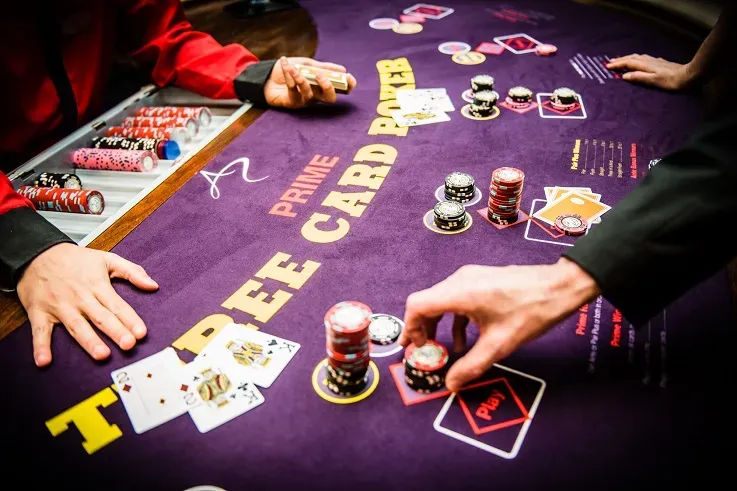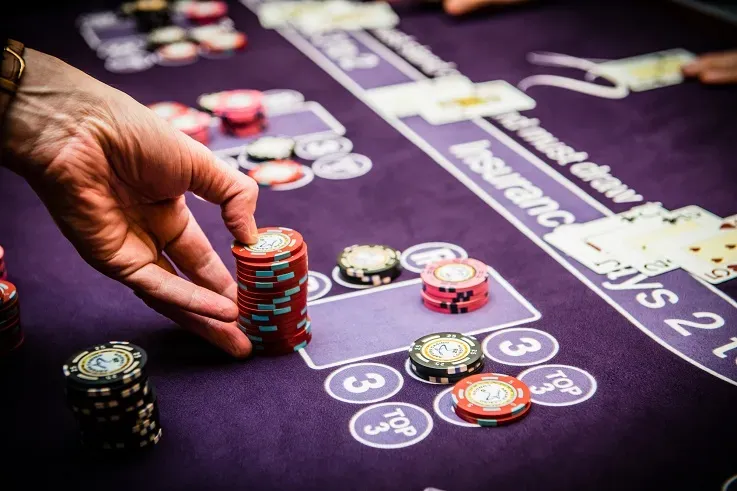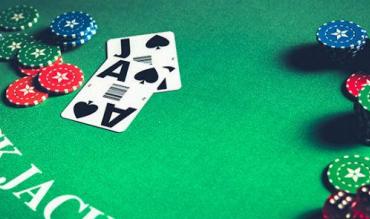The most frequent decision that you will have to make when you play blackjack in either a land-based or online casino is whether to hit or stand. That’s why it’s important that you know the correct basic strategy rules for this decision.
BASICS
- Standing in blackjack means you are satisfied with the total of your hand and do not want any additional draw cards.
- Hitting means you want to draw another card (or cards) to try to improve the total of your hand. In a land-based casino, there are hand signals that you must use to signify to the dealer whether you want to stand or hit.
- You can stand or hit on any hand that totals 21 or less.
- In the process of taking a hit, if your hand exceeds a total of 21, you’ve busted and you automatically lose your bet.
- Once you signal the dealer that you want to stand, that completes your hand for that round.
- A soft hand in blackjack contains an ace counted as 11. An example is A-7, which is a soft 18.
- A hard hand is any hand that either doesn’t contain an ace, or if it does, the ace counts 1. For example, a 10-8 and 7-A-10 are hard 18s.
HARD HAND STANDING AND HITTING STRATEGY
Whether you like it or not, about 4 out of every 10 hands you are going to get will be the worst hands in blackjack, namely 12 through 17. Virtually all of these hands are overall losers, meaning you will lose more such hands than you win. (The one exception is in an S17 game with two or more decks, where a 17 vs. a dealer’s 6 upcard is a slight winner.) The best you can do in a losing situation is to make the play that minimizes your losses in the long run. You’ll do that if you follow the basic playing strategy rules for hard hands.
What follows is a generic blackjack strategy for when to hit and stand when you are dealt a hard hand. (It assumes a multi-deck game with S17, DAS, and surrender is not allowed.)
- 5–8 … always hit
- 9 … hit if dealer shows a 2, or 7 though ace
- 10 … hit if dealer shows a 10 or ace
- 11 … hit if dealer shows an ace
- 12 … stand if dealer shows a 4, 5, or 6; hit on 2, 3, or 7 through ace
- 13–16 … stand if dealer shows 2 through 6; hit on 7 though ace
- 17–21 … always stand

There are some minor adjustments to the above playing strategy depending on the rules and number of decks. Here are the adjustments you need to make (assuming surrender is not offered.).
- If you are playing a multi-deck game with H17, don’t hit 11 against a dealer ace (you should double down instead)
- If you are playing a double-deck game, don’t hit 9 against dealer’s 2 (you should double down), and don’t hit 11 against a dealer’s ace (you should double down).
- If you are playing a single-deck game, don’t hit 8 against a dealer’s 5 and 6 (you should double down), don’t hit 9 against dealer’s 2 (you should double down), and don’t hit 11 against a dealer’s ace (you should double down).
Note: In chapter 2 of my Ultimate Guide to Blackjack you’ll find the complete hitting and standing strategy tables and charts for soft and hard hands.

COMPOSITION-DEPENDENT BASIC STRATEGY
Up until now, the above strategy for hitting and standing considered just the total of the cards in your hand, without any consideration of the individual cards that comprise the total. You can gain extra precision (i.e., slightly lower house edge) if you consider the composition of the cards in your hand (known as composition-dependent basic strategy).
Here’s one example of how the composition of the cards in your hand can alter the strategy.
Most players know that the correct strategy for a 10-6 against a dealer’s 10 upcard is to hit (assuming surrender is not offered). However, if your 16 consists of three or more cards (e.g., 4-5-7), you are slightly better off standing on your 16 rather than hitting.
In Chapter 5.1 in my Ultimate Guide to Blackjack are more details on other composition-dependent basic strategy plays.
I’LL PLAY BY THE DEALER’S RULES
I’d be remiss if I didn’t say something about players who “mimic” the dealer’s rules when they play blackjack; namely, they always hit on 16 or less, always stand on 17 or more, and never double down or split (because the dealer doesn’t). This is a terrible strategy that results in roughly a 5% house edge against you (that’s about 10-times greater than the house edge using the basic playing strategy discussed in this article). Fuhgeddaboudit!
SUMMARY
For many of the hands you will be dealt when you play blackjack, more so the hard hands discussed in this article, you are, unfortunately, the underdog no matter what playing strategy you invoke. Nevertheless your best strategy is to:
- always follow the basic playing strategy rules for hitting and standing because in the long run, you’ll lose less than with any other playing strategy.
